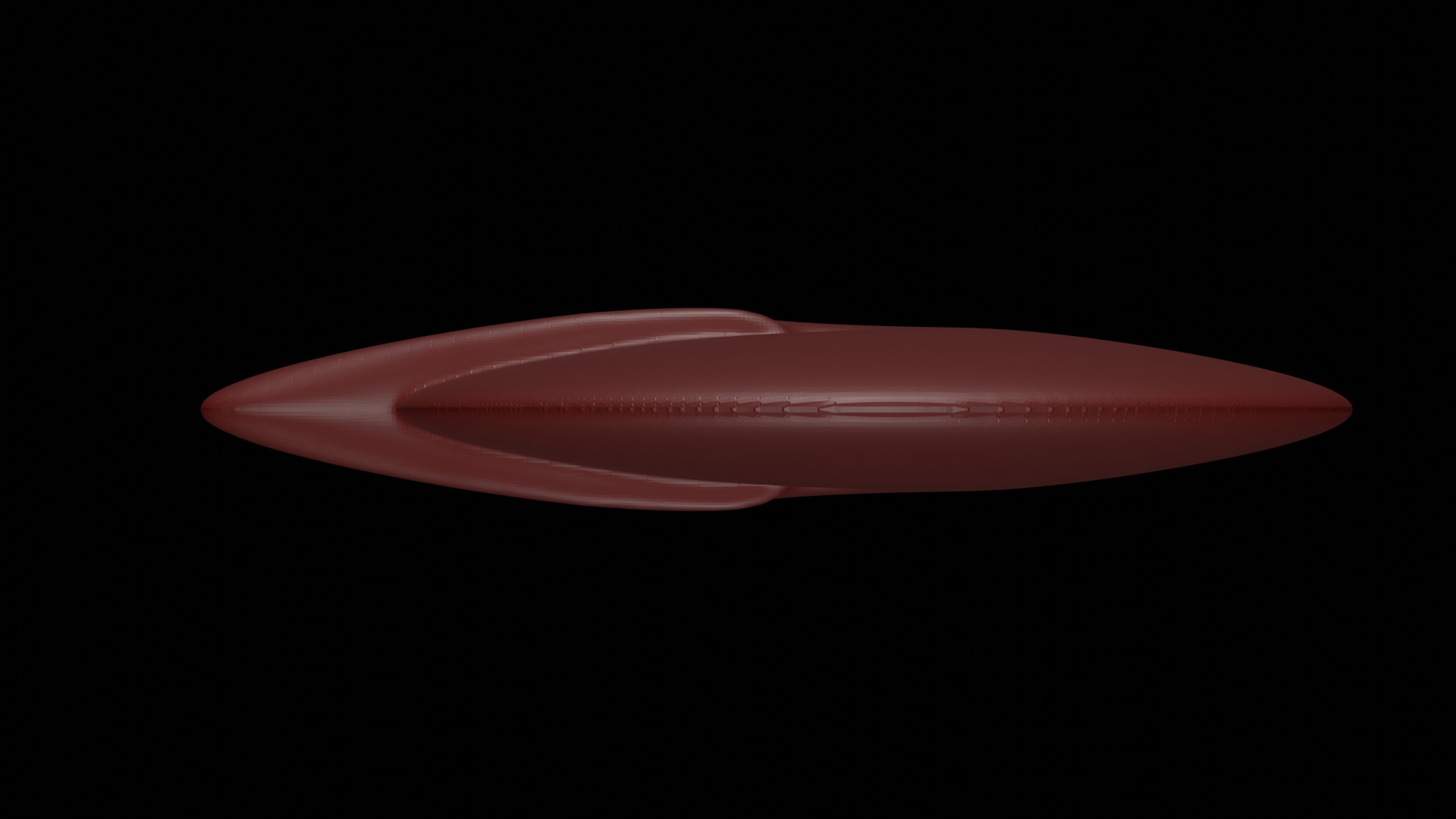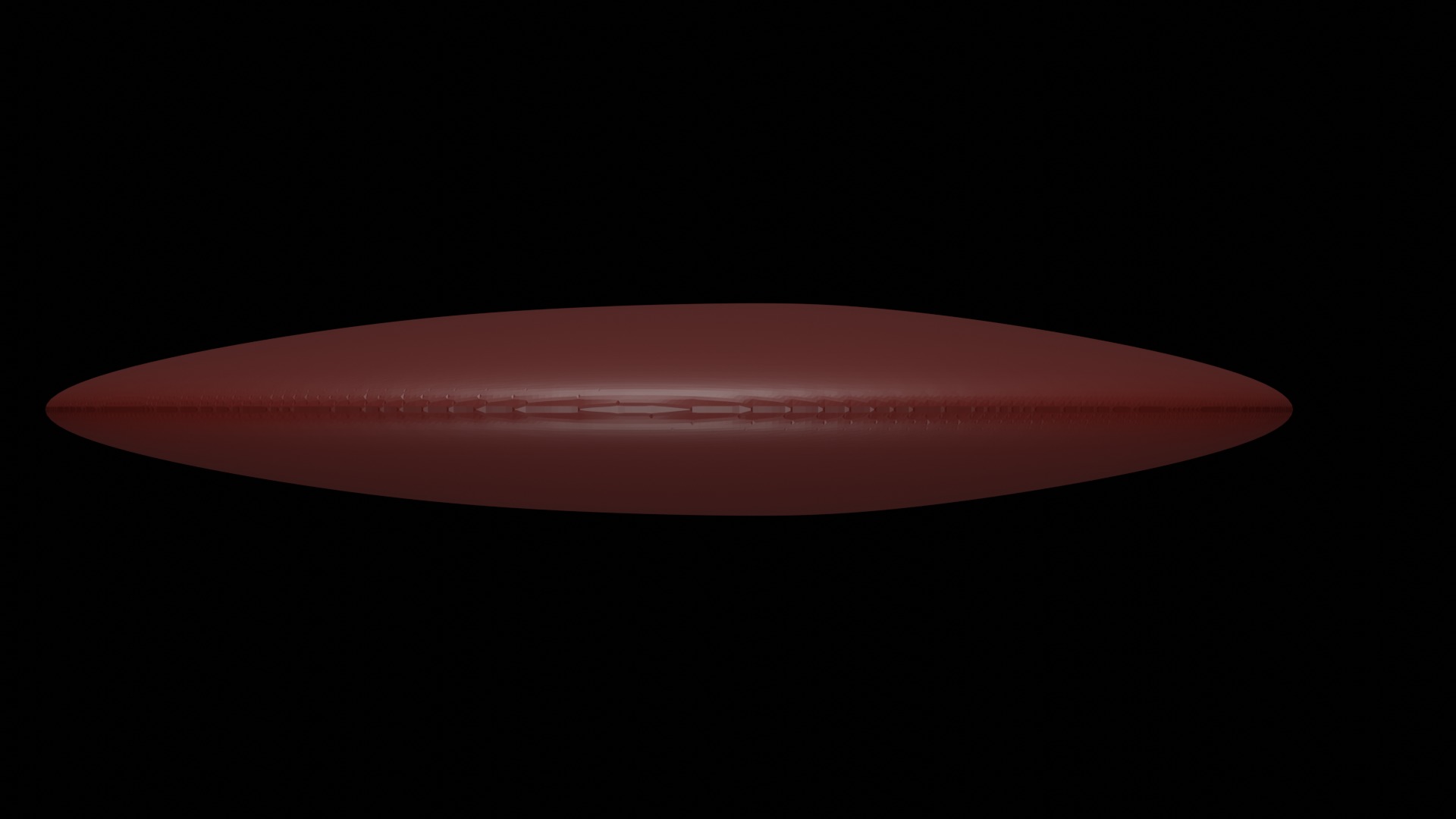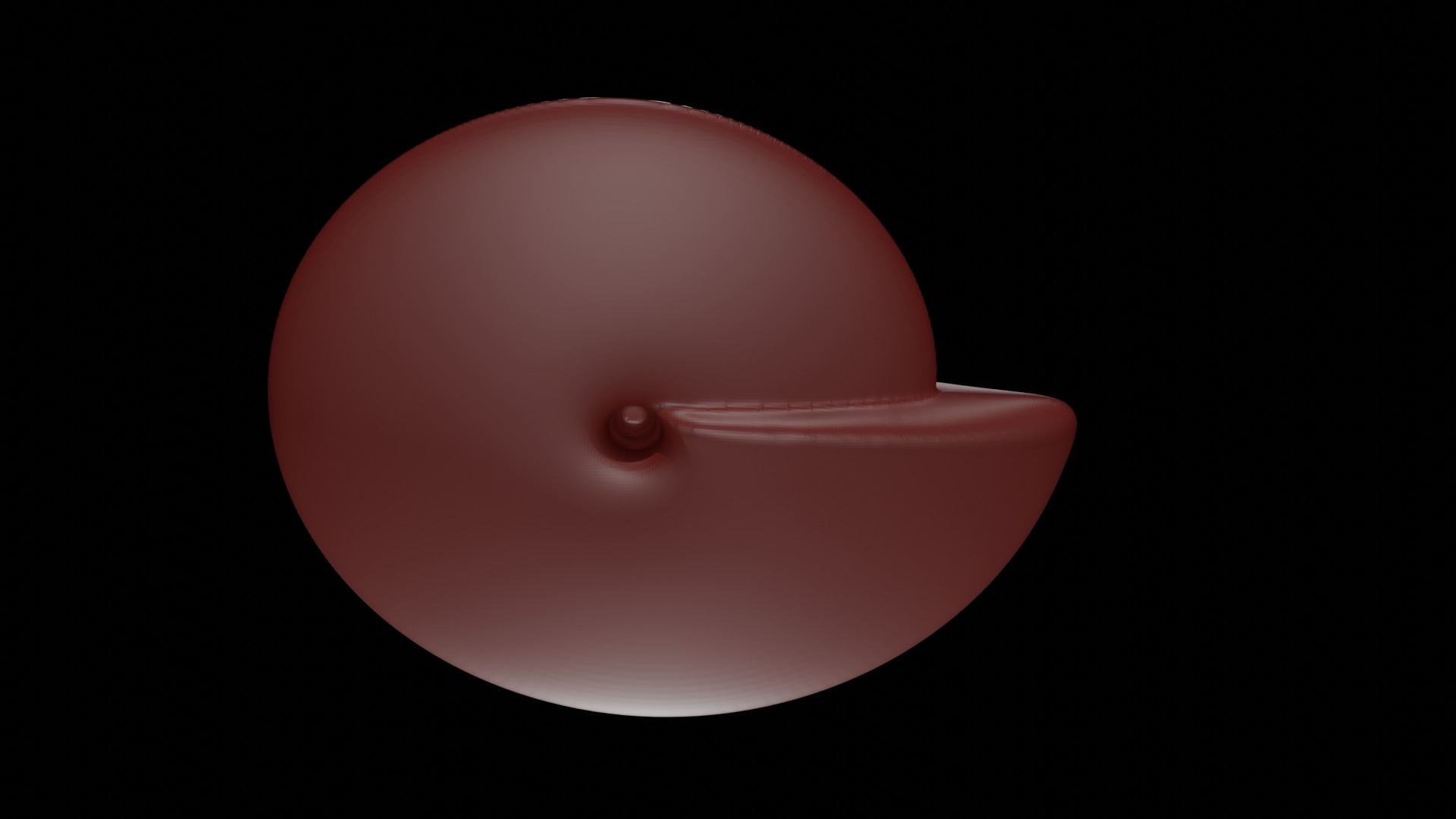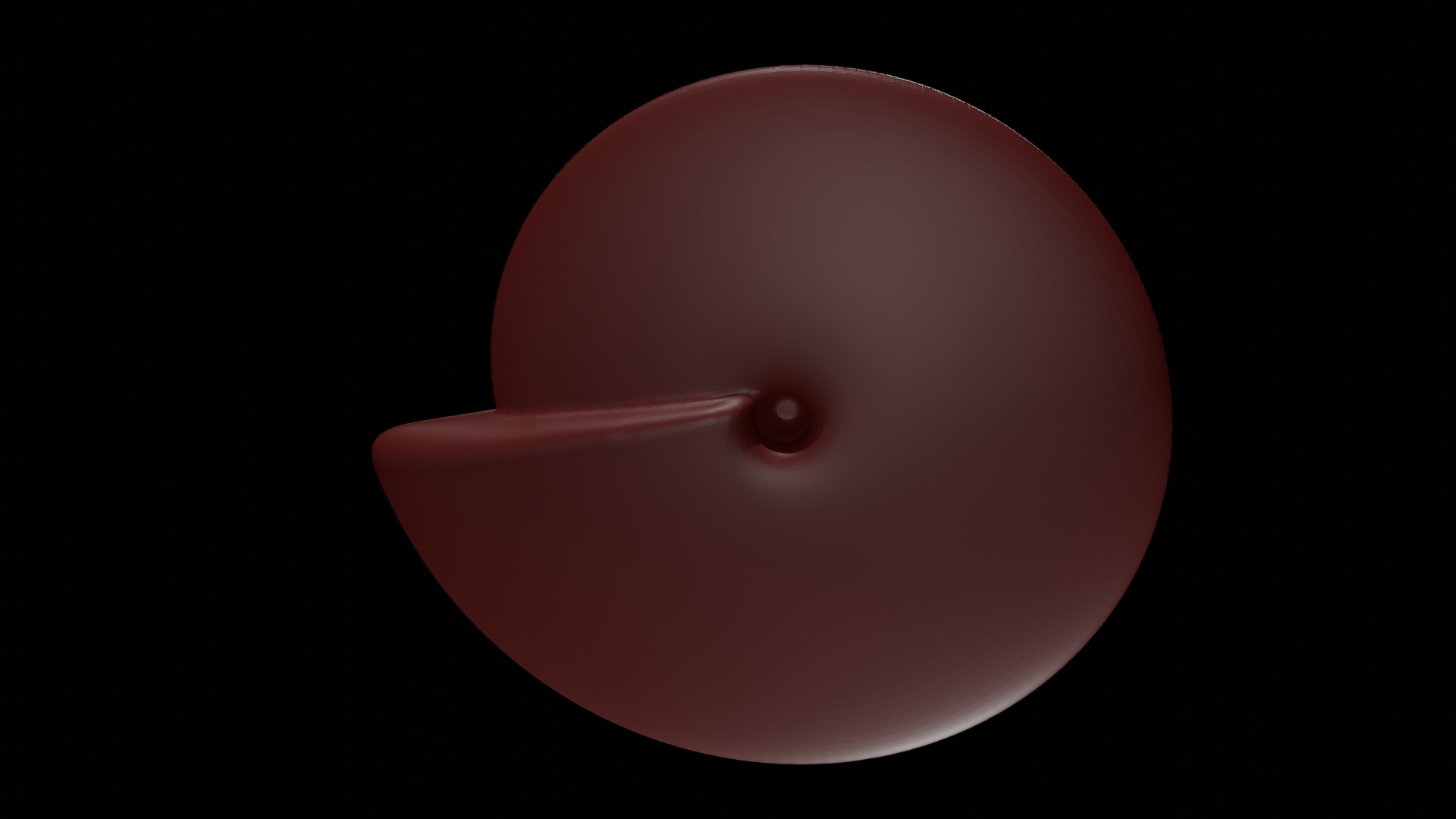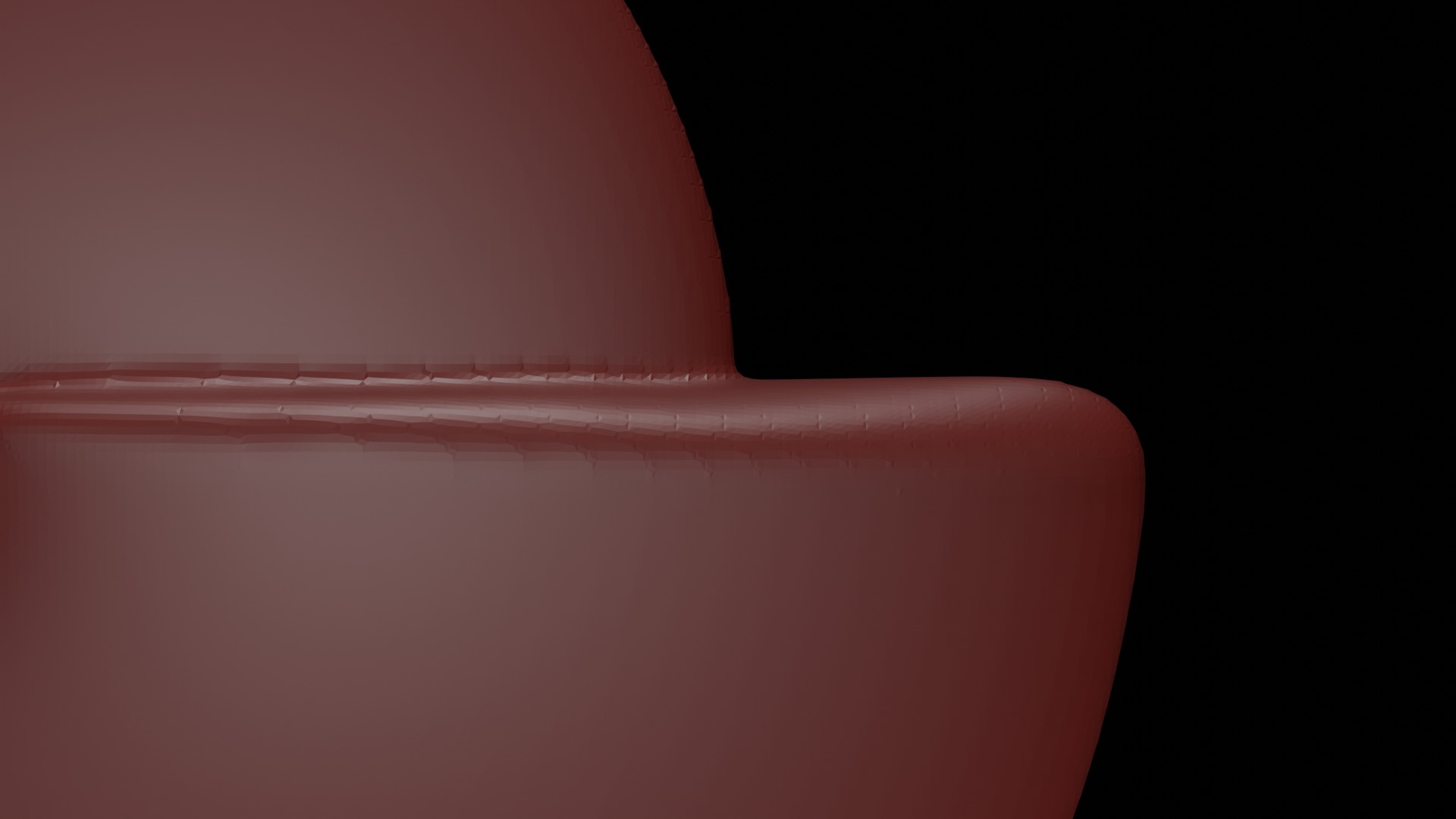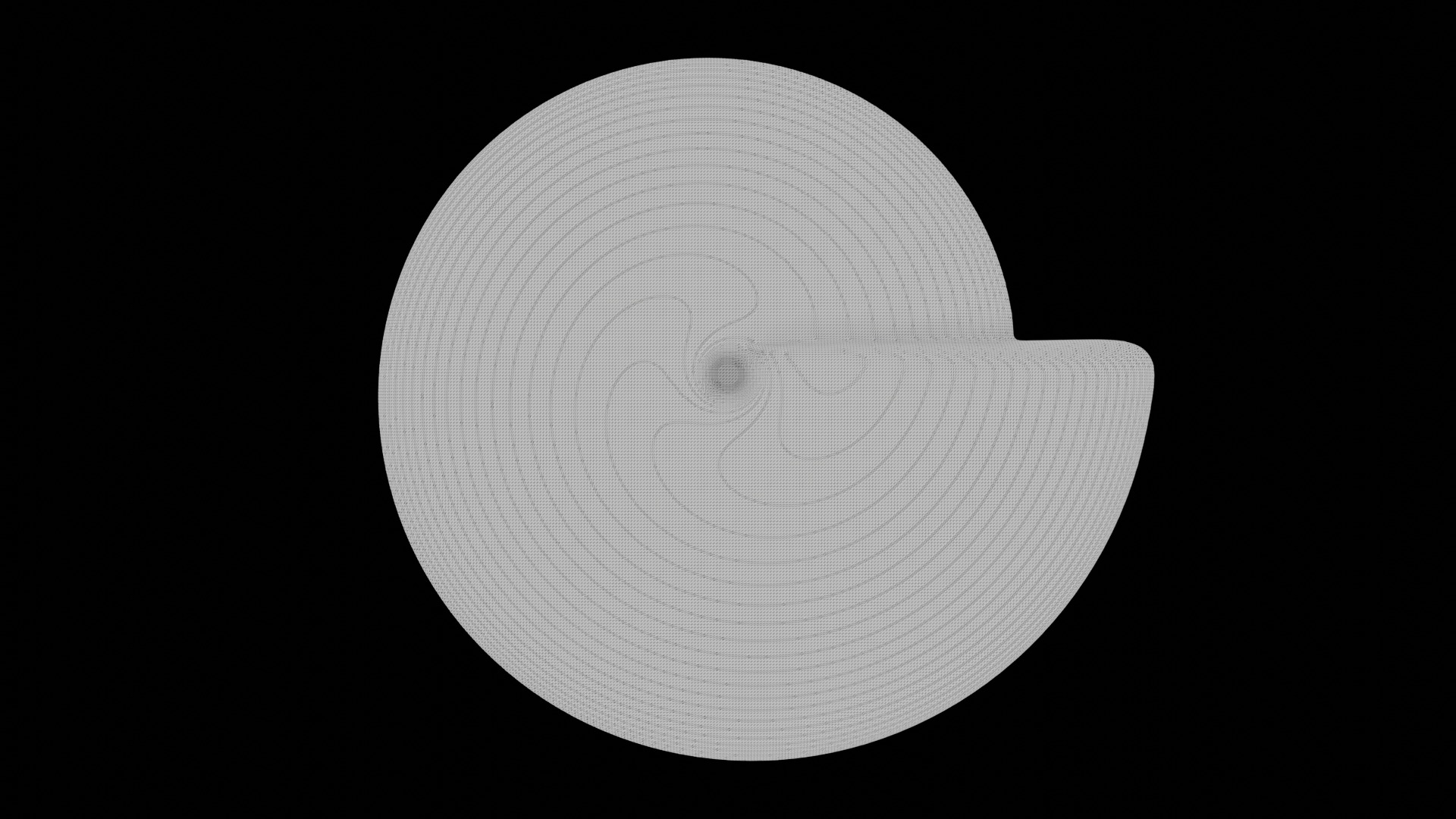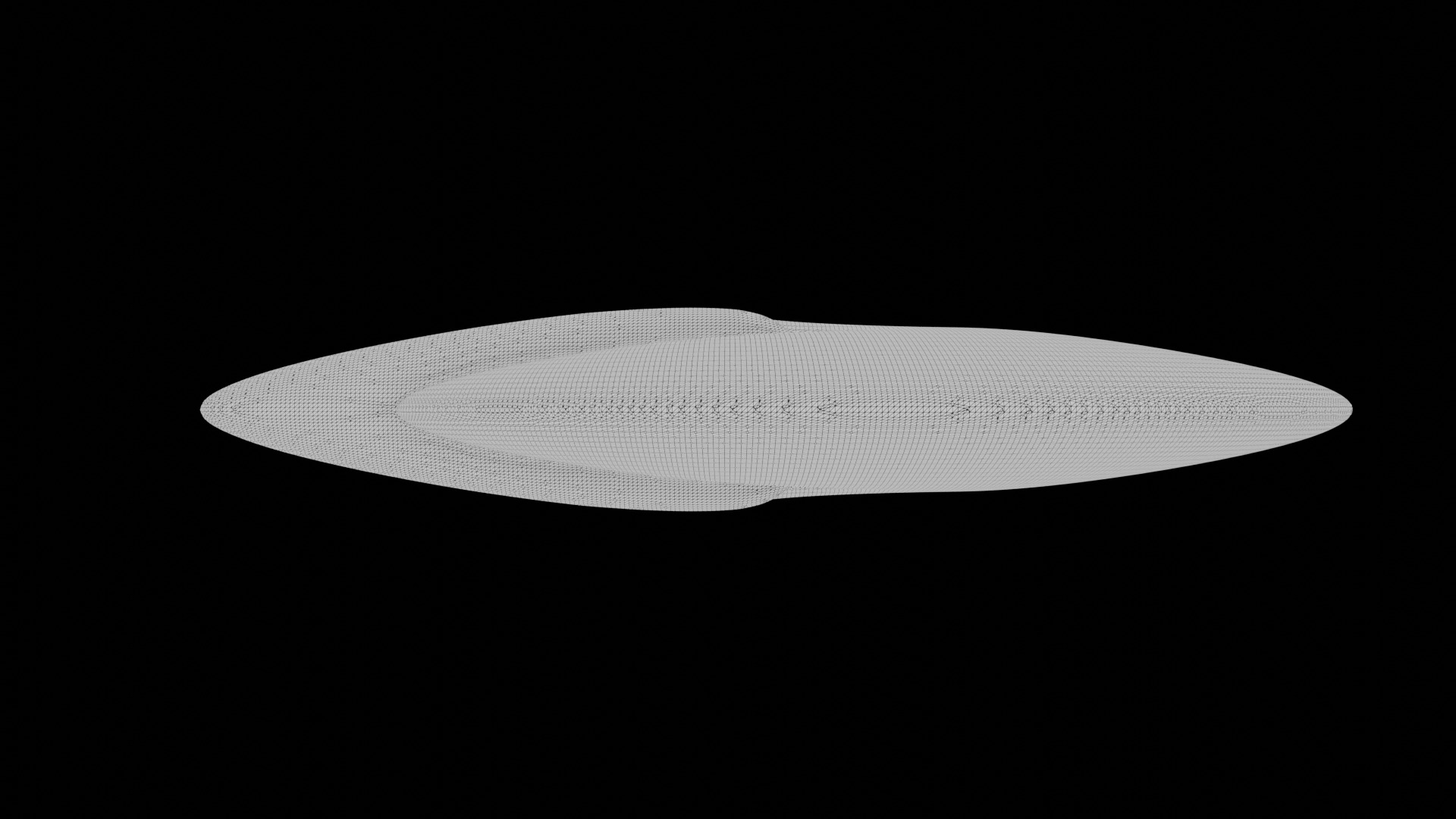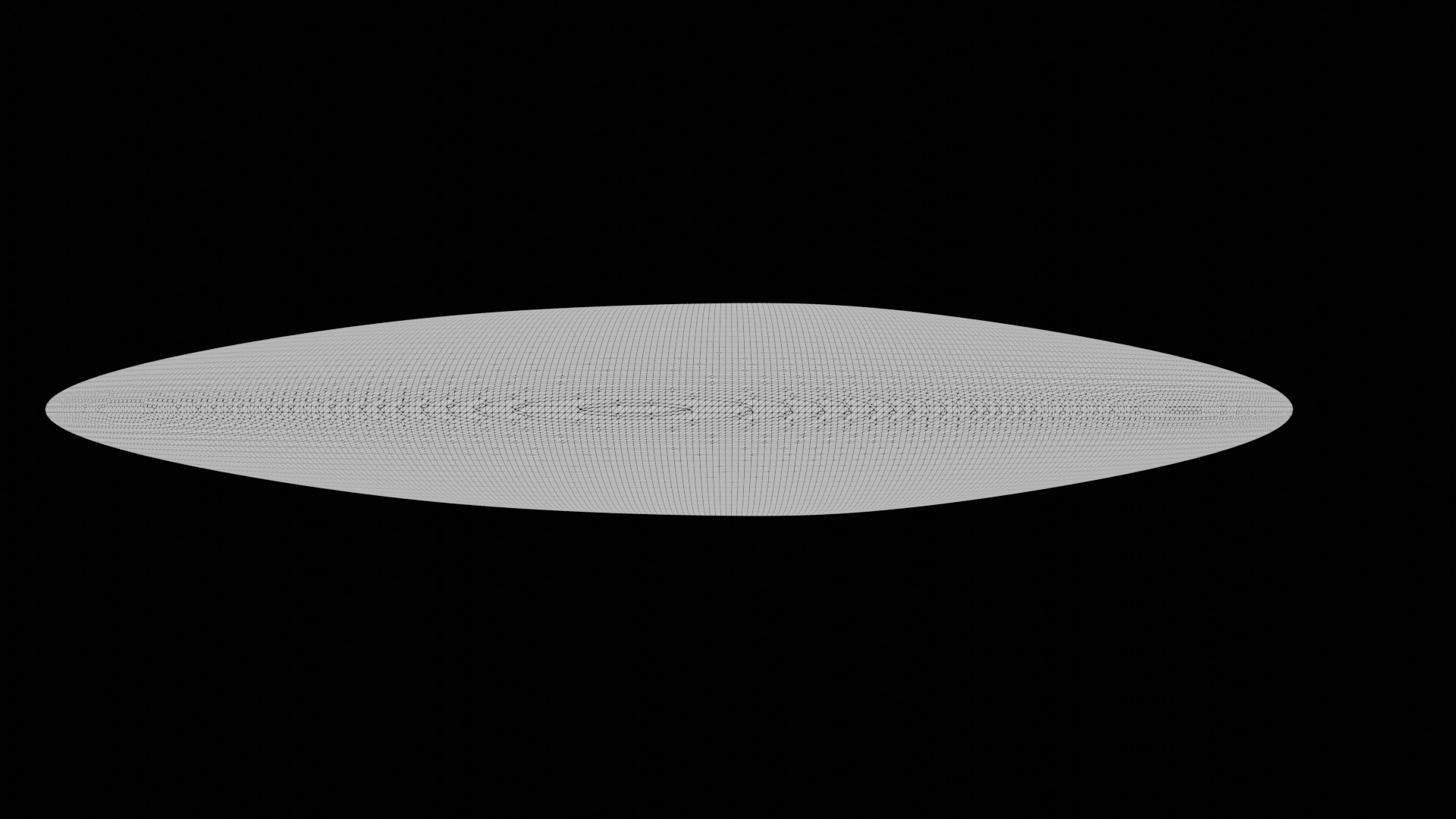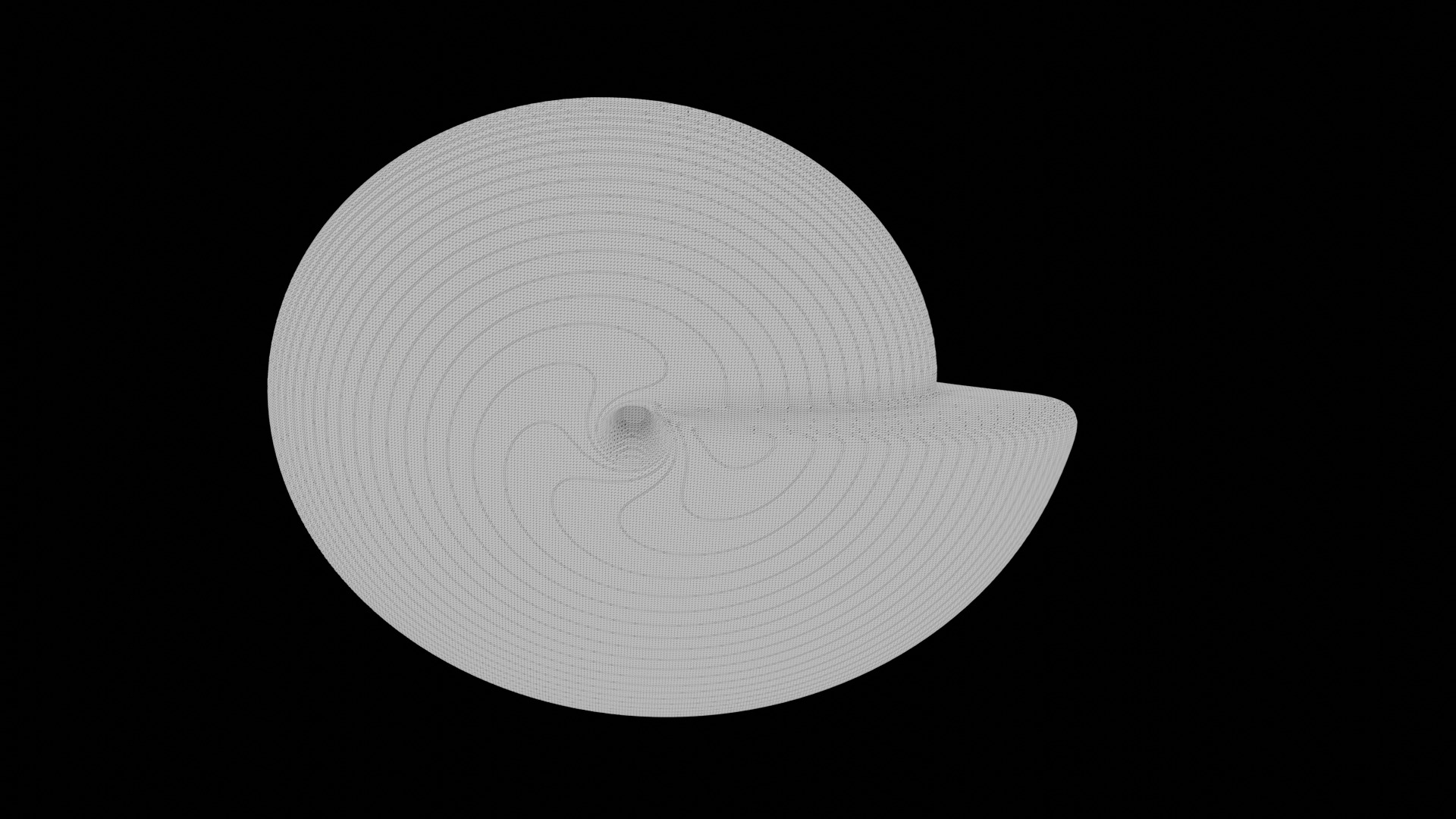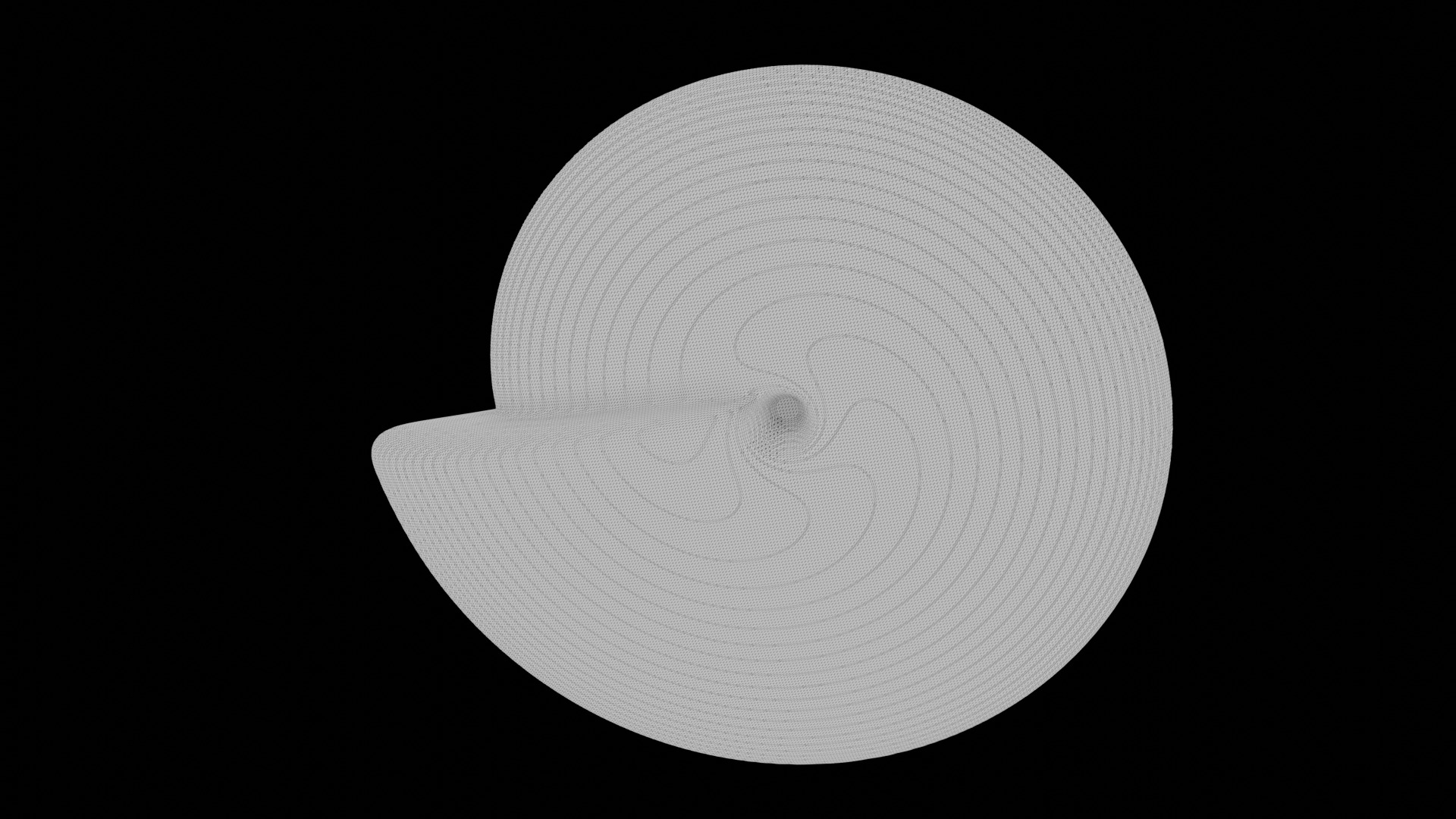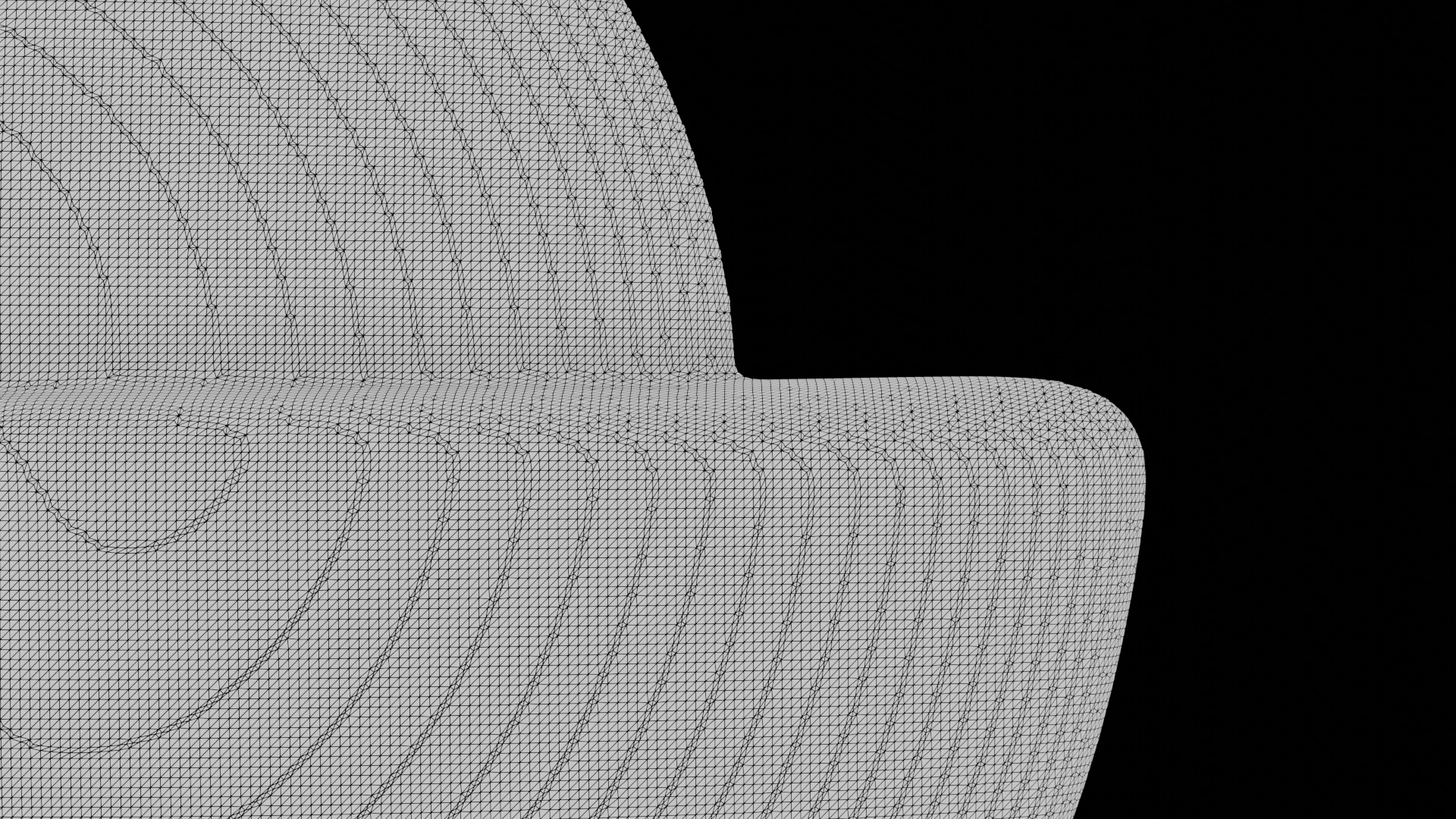
Ammonoid shell involute and compressed Prodromites 3D model
This model emulates the extremely involute ammonoid shell of Prodromites. The Carboniferous genus Prodromites is characterized by its laterally compressed, discoidal, involute, deeply-embracing whorls, narrow umbilicus, high, hollow abdominal keel, and complex, ceratitic septa. Where the keel is broken off, as is usually the case, the abdomen is narrow, slightly flattened, and angular. The surface, so far as known, is smooth, and destitute of ribs, constrictions, or other ornamentation. Ammonoids are a diverse group of extinct cephalopods bearing an external shell similar to Nautilus but closely related to modern coleoids, a group that includes cuttlefishes, octopuses, squids, among others (Hoffmann et al., 2022) . These organisms inhabited the ancient oceans from the Early Devonian to the earliest Palaeogene period, reaching an interval of approximately 350 million years across the Phanerozoic (Landman et al., 2015; Lehmann, 2015). Fossils of this external conch represent one of the most common findings in marine assemblages, showing a highly diverse and abundant record around the world (Saunders & Swan, 1984; Saunders et al., 2004; Korn & Klug, 2012; Morón-Alfonso et al., 2023, figs. 3-4). Because the ammonoid conch grew along with the animal soft-body, this structure frequently records valuable information including morphological modifications that occurred during ontogeny useful to study the paleobiology and paleoecology of this group (Kullmann & Scheuch, 1970; Kant, 1973; Korn, 2012; Erlich et al., 2016). By making a purchase, you are helping to fund future research on these fascinating creatures. If you're interested in exploring more fossil models, feel free to check out my profile for other options.

